Here’s a scenario that happens way too often in the SaaS industry:
You’ve built a product that provides real value for your customers. You’ve done your research, invested in software development, tested your solution, and now you’re ready to introduce this gem to the world.
But the more time you spend winning your customers, the more you realize it’s impossible to compete in a saturated SaaS market. Because, among thousands of solutions, the same few dozen seem to get all the attention.
Doesn’t sound fair, right?
But there’s one thing in common for brands on everyone’s lips: they invest in content marketing to be in front of their audience at all times.
Having spent 6+ years in SEO and relationship-based link-building, I’ve learned an important lesson: the most revolutionary solution out there might never succeed if no one is there to talk about it.
In this brief guide, I’ll walk you through content marketing tactics that bring SaaS products closer to their buyer, so buckle in!
What is SaaS Content Marketing?
Content marketing is a strategy that focuses on creating and distributing valuable and engaging content to draw the buyer’s attention to your solution. Rather than driving immediate results, content marketing is a long-term approach to consistently appear in front of your buyers and build relationships with them during every sales funnel stage.
Why is it important?
According to the research, even small companies with no extra budget use more than a dozen SaaS apps for their work.
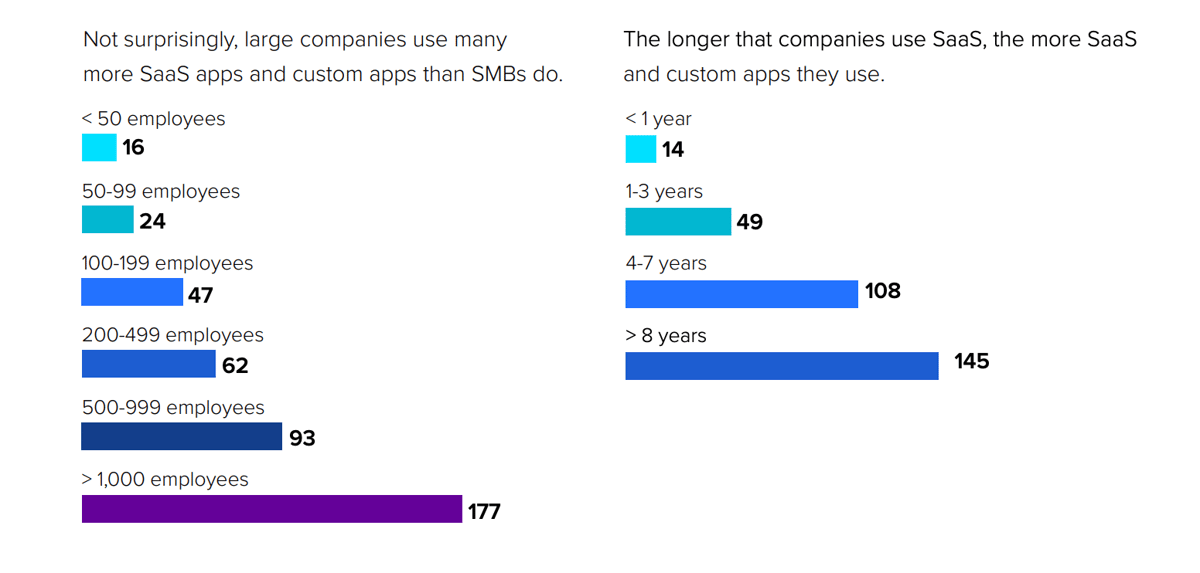
The average number of SaaS apps used by companies sorted by the employee headcount and the number of years a company uses SaaS. Source
Yet, even though this number seems high, you still have to compete in the industry with at least 30,000 SaaS apps to make it to the buyer’s shortlist.
And that’s exactly why you need to create content that communicates what you’re doing and who you’re doing it for: the more relevant content you create, the narrower the category you compete in.
Among other benefits, content marketing helps SaaS companies:
- Build brand awareness
- Establish trust with your audience
- Generating inbound leads
- Driving revenue
So, how do you build a strategy that helps you achieve all that?
Creating a SaaS Content Strategy in 6 Steps
Content marketing strategy goes beyond creating blog posts and posting LinkedIn updates every few weeks. For the strategy to work, you need to build a system that performs a specific task, whether engaging with the target audience or educating the buyer about your solution. From teaming up with a Webflow development agency to take care of your site’s design and UX to getting top notch content created and published, your content strategy needs to be broken into several essential steps.
Follow these steps to build a content marketing engine:
Step #1: Setting Clear Goals for Your Strategy
One of the biggest misconceptions about content marketing is that content itself is the end goal. In reality, content is your means for achieving a specific goal. In SaaS, this goal will likely be signing new clients.
The SMART model is a good start for defining the strategy goals:
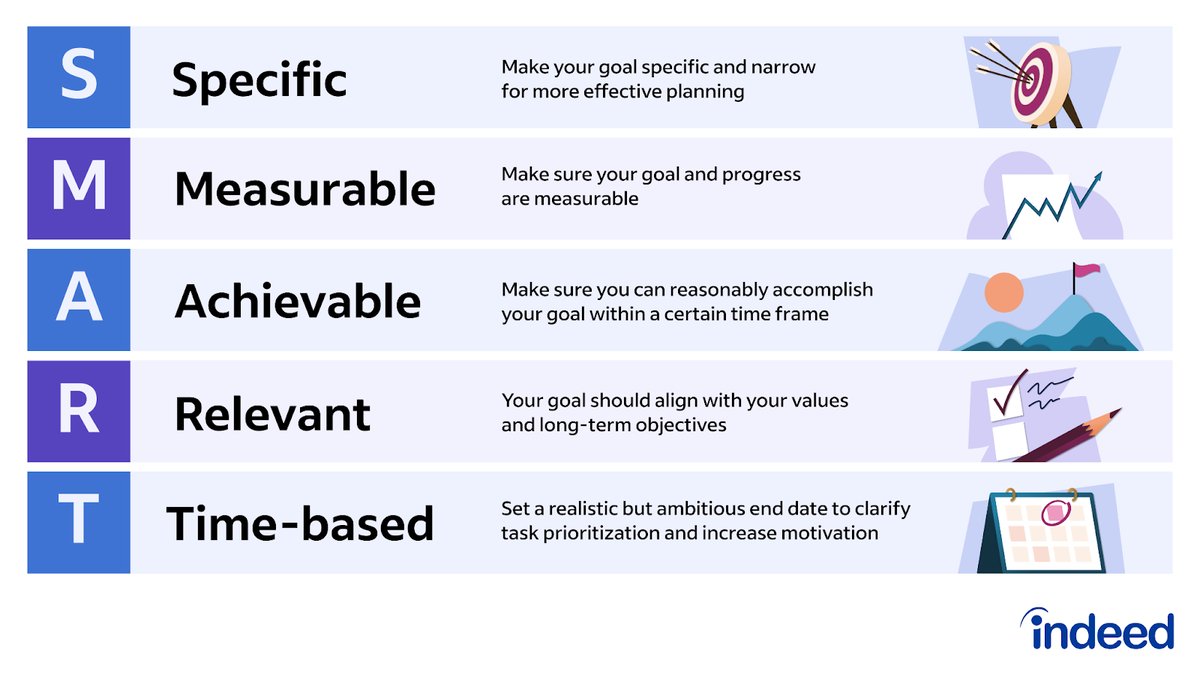
SMART Goals Breakdown. Source
For example, your long-term business objective is to get most of your leads through inbound, so you need to invest in content marketing for users to find your solution organically.
Then, your SMART goal would be to bring a thousand active SaaS users by the end of the year by introducing a podcast and distributing the content across various channels.
Step #2: Understanding your Target Audience
No amount of content will help you get new clients if your target audience has no idea you’re talking to them.
How to fix it?
Switch from writing generic content to communicating things your buyers genuinely care about. To know what to write about, create an Ideal Customer Profile and Buyer Persona:

Example of ICPs and Buyer Personas. Source
Once you know your ideal client's main challenges, objections, and goals, creating content becomes much easier: you educate your audience on new opportunities, showing how your solution helps them overcome the existing problems.
“In content creation, and marketing, in general, ideal customer is not about plain demographic data. Sure, you need a clear target to focus on, but when you’re creating an ICP, important attributes to add are pain points, business goals, and technologies they might already use. And then, as a SaaS provider, you define how you value fits within this scenario. Buyers really appreciate when you write content for them and about them, not about you.” Iurii Znak, CEO @ Respect.Studio-
Step #3: Choosing the Right SaaS Content Types
In most cases, SaaS content aims to:
- Tell the audience about the solution
- Educate the buyer on the benefits of using a solution
- Explain how the solution works
- Address the existing concerns around adopting the solution
To close all these gaps, you need the right toolkit, various content types, and formats to deliver each message. Here are some types to consider:
Research reports and Whitepapers
This is the ultimate content type for addressing the status quo of your audience and educating them on what could happen if they didn’t change it.
Research and white papers dive deep into the problem you’re solving with your SaaS Ideas and trends in the industry. This format is perfect for potential buyers to identify the problem and consider your solution.
Guides and tips:
Potential buyers love useful content that aims to help first and sell second. Don’t we all?
Whether it’s educational content on your topic or “how-to” guides related to your solution, buyers appreciate tips and tricks they can try independently.
Images, infographics, GIFs, and slide decks
Visual learning is a must for SaaS solutions because 90% of their success depends on retention and active users.
Adding useful hands-on content will help spark the users’ interest in testing your solution for better results or trying out the new features.
Video:
While video might be optional for some industries, it should be a priority for SaaS. Aim at helpful and educational content that can help your users figure out the platform on their own. Look at the YouTube channels of big SaaS players like Slack or Salesforce for reference: they include many explainers and practical tips for getting the most out of the platform.
Video production for tech companies can be a powerful tool to educate potential customers and showcase innovation and brand personality. Explainer videos can break down complex concepts into easily digestible pieces, while product demos can give viewers a firsthand look at how your technology works.
Bonus point: Video content is a lifesaver for interactive demos and user onboarding, as today, buyers want minimum interaction with sales reps when testing the software.
Step #4: In-Depth Keyword Research
No matter how you treat SEO and keyword research today, it’s not going anywhere if you want to be in front of your buyer. Here’s a quick 101 on keyword research:
- Create a list of terms and keywords you want to associate your solution with based on industry research, relevant terminology, and how your potential customers talk about the problem you’re solving.
- Conduct keyword research to see what words and phrases are relevant. You can use paid tools like Semrush and Ahrefs, use free platforms like Quora, Reddit, and Answer the Public, or use a free keyword generator to see what users are searching for
- Combine key terms with long-tail keywords (e.g., “project management tools for software development teams”) to hit the sweet spot in rankings.
One area to consider for keyword research is data-driven product management. Chisel’s article provides a comprehensive guide on how to leverage data to drive product decisions, which could be relevant for your SaaS audience.
Step #5: Discovering Distribution Channels
Finding the right channel for content creation is tricky:
You don’t use a certain channel because it’s popular or your competition uses it. The focus should always be on, “Where does my buyer hang out the most?”
Once you know where to start, study what content types and formats work best for the platform and tailor your content accordingly.
But remember: Results from content marketing take time. When trying a platform, give it at least a few months before deciding it doesn’t work.
Step #6: Results Monitoring and Tracking
Throwing content out there and waiting for clients to come is not the best strategy, as your goal here is to keep an eye on what’s working.
Gather analytics to see:
- What content performs better
- What content is the most interesting for your ICP (not just all users)
- What platforms give you a more engaged audience
With all the data at hand, you’ll create content smart, not hard, because you’ll know what to eliminate and focus on to yield more results.
Refreshing Your Existing Content
You don’t need to produce 5 new blog posts daily to build a solid content marketing strategy.
It’s much easier to create evergreen content and update it occasionally. Make a habit of analyzing your content and adding new data or keywords to your research, whitepapers, and blog.
Here are some other tips for boosting your content productivity:
Tools for Content Creation and Optimization
If you don’t want to spend hours creating content, check out these tools to help you out:
This tool is perfect for analyzing how to create content that converts. You give it an idea for a blog post, and the tool will define the word count, keywords, and other vital metrics to make the text stand out in the search engines.
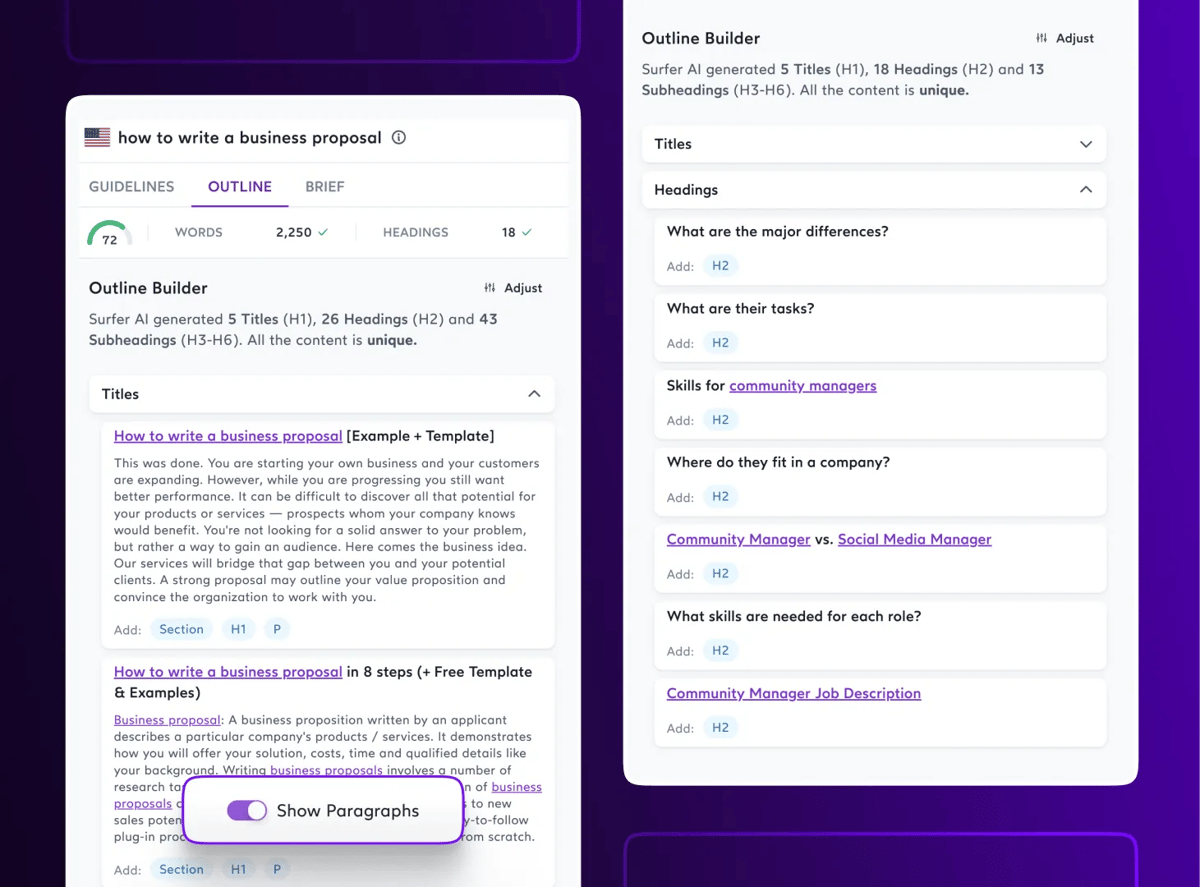
To skyrocket your content strategy, you’ll need a one-stop-shop solution for planning, posting, and analyzing content across the platforms. And that’s what tools like Hootsuite are here for.
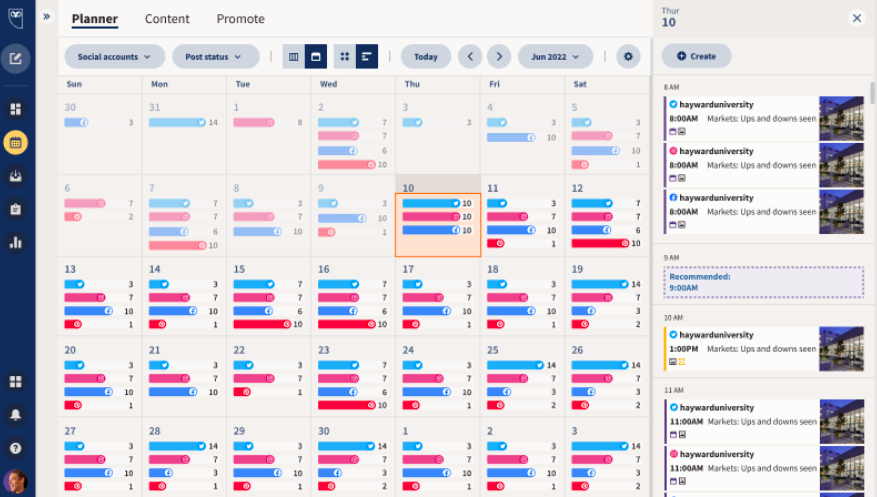
Unlike other AI writing tools, Grammarly is a full-on editor that helps you create and optimize content according to the tone of voice and format.
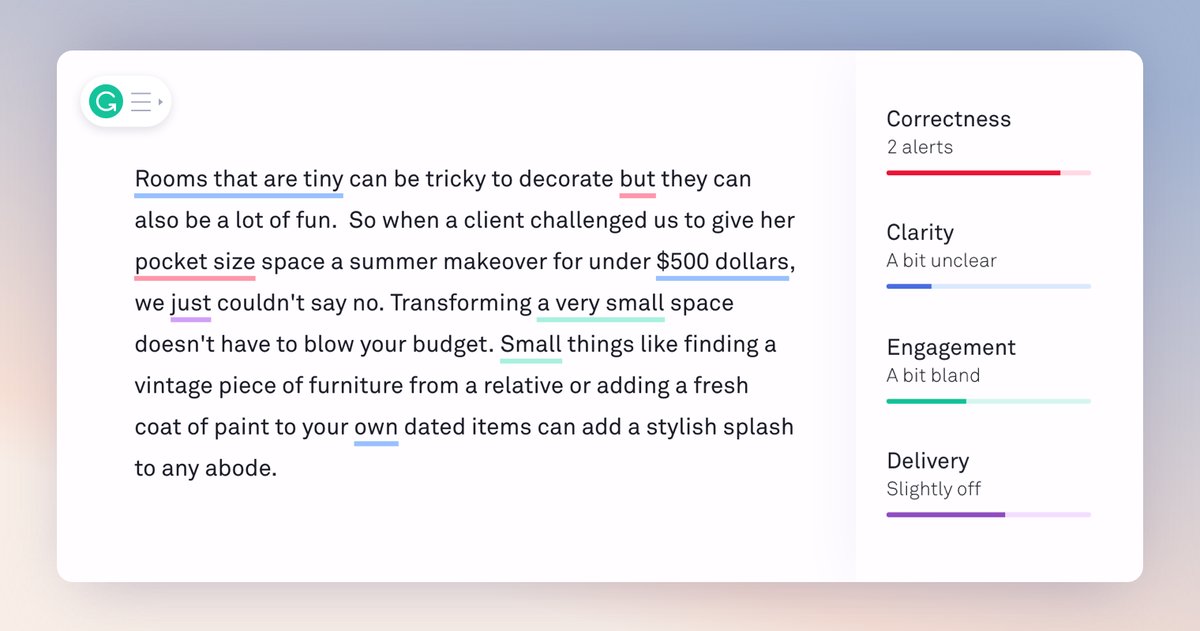
Predictive Analysis
To ensure your content reaches the right audience with the right message, it simply has to be data-driven. Did you know? A new study says that by 2026, 65% of companies will mainly rely on data-driven decisions.
To benefit from predictive analysis, which is the analysis of historical data to make more informed decisions about your strategy, SaaS teams need to collect analytics from the existing content and ask their users and prospects for honest feedback and expectations from a similar solution.
How Do You Promote Content?
If there was one lesson you could take away from this guide, it should be this:
If you want creation to become a strategy, you shouldn’t produce content in silos. Every piece contributes to a bigger goal: get and retain attention to your offer.
And you’re free to use every means to help your content reach a bigger audience.
Cross-Channel Strategy
On average, a buyer needs 3-5 touch points with your content before purchasing.
So, to keep your customers in the loop, you should create and optimize your content for different channels. One great way to do it is to create an app that consolidates your content and offers personalized notifications based on user preferences.
For example, if your goal is to get a qualified lead to sign up for a free trial, create relevant content to showcase the benefits of your solution (walk-through videos, feedback from other users, helpful tips, etc.) and reach out to your buyers.
Pro tip: Ensure you don’t just promote something with your content. If you send an email, add value to it by creating a top-5 highlights from your whitepaper or research, letting the customer handle the rest.
Social Media Promotion
Social media is a great way to get buyer’s attention.
The only pitfall, though? Customers can’t be bothered with selling on social media. In 99% of cases, that’s where they go to hang out and learn something new.
Take the most out of your existing content to create easily digestible bits of information, and be there for the customer. Add music to Instagram posts and use eye-catching visuals for Facebook and Twitter to draw users’ attention and make them learn more about your business.
They might not purchase today, but they might do it later.
Email Marketing Campaigns
Although some people consider email marketing annoying or dead, it doesn’t matter what channel you use if your content has value.
Email marketing is a great way to share useful content solution updates and personalize your offer based on the buyer’s behavior.
Paid Advertising Channels
According to Cognism, advertising shouldn’t be used to capture demand for your solution only. Another great way to use paid ads is to build awareness around your brand.
Take your evergreen content, add compelling copy, and target prospects interested in your solution. Believe me. They will appreciate the non-sales approach.
Influencer Marketing
Don't think twice if you have enough resources to engage with influencers and subject matter experts.
Today, buyers rely on peer recommendations, and if they see someone they admire talk about your solution, they will be excited to try it out as well.
Content Syndication
When using different channels for content creation, you might feel overwhelmed with the content you must create to engage with your audience across the platforms.
In reality, you don’t have to create separate and authentic content. You need to distribute a similar message (with a slightly changed format when needed) and motivate your customers to explore other media for even more value.
Webinars and Events
Conducting webinars and live events have several advantages for your strategy:
- You have a list of people interested in the topic of your solution
- You have a ready-made piece of valuable content to share with the audience
- You have a chance to hear questions and requests from your prospects that could be easily transformed into content later
The possibilities for content distribution are endless. However, to use them efficiently, you should pay attention to the actual results they bring to your SaaS solution.
Measuring Success
Key metrics to track in SaaS content marketing
To know if your content reaches the right audience (or if it reaches any audience), add these metrics to your marketing performance toolkit:
- Reach and engagement
- Number of unique visitors
- Sales velocity
- Lead-to-customer rate
- Churn and retention rates
- Customer acquisition cost
Pro tip: Don’t focus on vanity metrics like impressions or views when making decisions. You can go viral online but reach an entirely different audience, leaving your team with no sales opportunities.
Tools for measuring ROI and performance
Depending on your channel, you can either manually gather the content performance data from every channel or use a dashboard solution that stores these metrics in one place (like Hootsuite).
But, when it comes to measuring ROI, the process gets trickier. Here are some tools to consider:
- Ruler Analytics
- Google Analytics
- Kissmetrics
But remember: you can’t tie every single content piece to revenue. In most cases, the combination of different approachcombining influences your buyer.
How Do You Improve Your Content Marketing?
The challenge and the magic of content marketing is that it’s unpredictable. There’s no magic formula to tell you exactly what to do. But if you want to improve your content marketing gradually, here are some tips:
- Review your ICP and strategy once in a while to make sure your business and content objectives are aligned
- Update your evergreen content to rank higher in search results and stay relevant for your buyer
- Don’t just store your data: analyze the data you collect to get actual insights
- Stay curious: Talk to your buyers to know what content they would appreciate
- Test and iterate: Algorithms are changing, buyer behavior is changing, and your goal is to stay on top of these things
Wrapping up
Content marketing is an essential part of building a SaaS brand. And while some people create content for creation, the real pros know it’s all about the strategy.
This guide is your introduction to content marketing, which impacts your business.
It can be too much to handle at once, so don’t rush into optimizing everything simultaneously.
If you want to create a content strategy that gives your brand credibility and a solid online presence, book a mentor session with me on MentorCruise!
Let’s figure out a path to results-driven content together.


